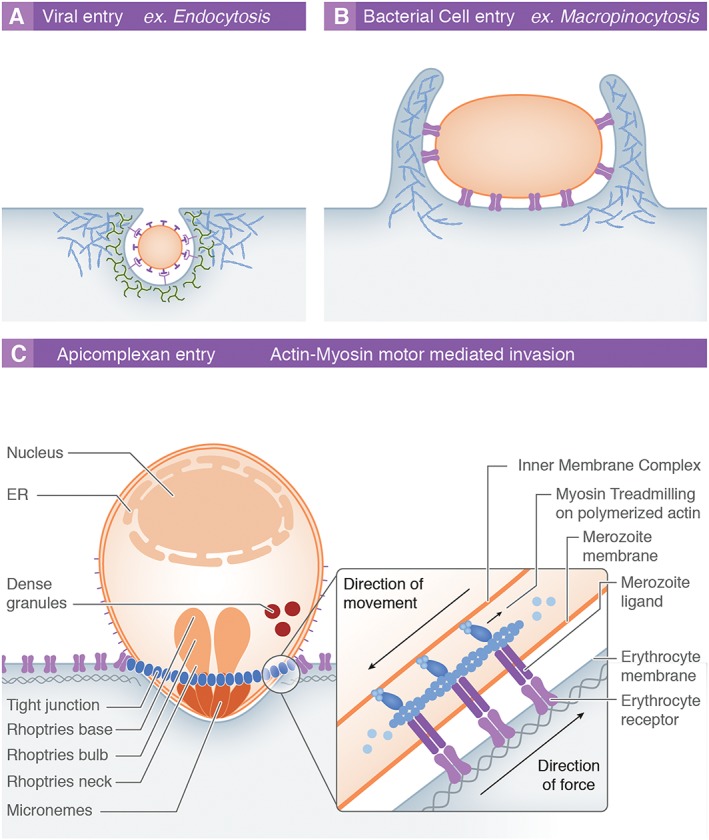Figure 1.

Mechanisms of host cell entry by intracellular pathogens. Most intracellular pathogens exploit host processes to overcome the intrinsic barriers to cell entry: the host cell membrane and cytoskeleton.
A. The endocytic pathway, which regulates a range of cellular functions via controlled receptor internalization and recycling, is exploited by numerous viruses (e.g. rabies virus) to facilitate their own uptake. The process involves the recruitment and subversion of various host proteins (green), which mediate membrane curvature and vesicular scission. Host cell actin (red) polymerization is also required during the internalization process.
B. Larger pathogens such as many intracellular bacteria (e.g. Salmonella spp.), protozoa and also certain viruses enter host cells through the initiation of host cell actin‐mediated membrane ruffles that fold over and lead to engulfment of cargo into large intracellular vesicles (macropinosomes).
C. The model for apicomplexan cell entry involves active invasion using an actin–myosin motor. This involves myosin treadmilling on polymerized actin connected to apicomplexan surface ligands, which causes an inward movement of the pathogen without a response or involvement of the host cell. ER, endoplasmic reticulum.
